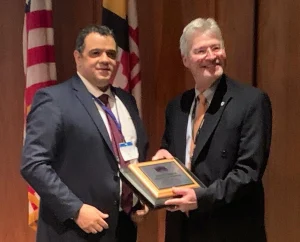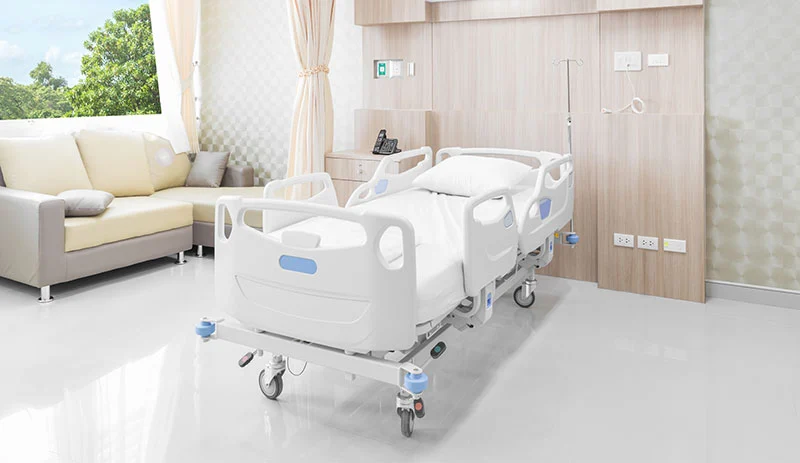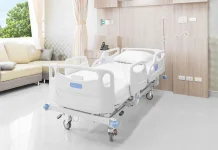IUVA Healthcare/UV Working Group
Troy Cowan director, Vision Based Consulting

Congratulations to the Healthcare/UV Workshop Team and the co-sponsors in the National Institutes for Standards and Technology (NIST) for the tremendously successful workshop “Ultraviolet Disinfection Technologies & Healthcare Associated Infections (HAIs): Defining Standards and Metrology Needs” in January in Gaithersburg, Maryland. With more than 150 attendees, nearly 20 exhibitors and more than 45 speakers, the two-day event more than achieved its goal of increasing collaboration among researchers, infectious disease physicians, UV disinfection companies and regulators, leading to UV efficacy standards.

Special thanks to Dr. Walter Copan, undersecretary of commerce for standards and technology and NIST director, and Dr. Eric Lin, director of the NIST material measurement laboratory, for their opening remarks, support and for the efforts of their NIST team in hosting the event. Thanks to their efforts, this second annual workshop attracted attendees from more than 60 commercial firms, five federal agencies and 16 hospital, university and medical research firms.
During the industry roundtable, several panel members affirmed the need for uniform standards to measure UV device performance. Such standards would reduce wasted time and resources determining which performance metrics to use. More time could be focused on satisfying clients’ needs while increasing overall penetration of UV technologies into healthcare’s environmental cleaning market, which has been a difficult process.
These difficulties have been compared to IUVA’s success in the water treatment sector, resulting in questions, such as “Why don’t we work it like they did on the water treatment side?” and “What lessons can we learn from what it took to make UV viable in the water market?”
Responses from more “surface-focused” folks have been mainly threefold:
- Water has well-defined legislative and regulatory driven performance criteria, where healthcare surfaces do not.
- UV water technologies deal with only pathogens that are waterborne and, again, regulator specified; healthcare surfaces involve a totally different pathogen set, not limited or defined by regulators.
- The targeted water pathogens are confined in a specific treatment space and treated using well-integrated systems designed to meet the performance metrics; the healthcare surface pathogens are dispersed throughout an entire facility, without fixed confinement, and treated using semi-controlled processes – again, with no cleanliness metrics for tracking performance.
Clearly, no avenues for comparison exist – or so it was believed. Recent developments in the healthcare sector have given pause to rethink some of the above. These changes are coming because healthcare professionals are asking the key questions: “How clean are our facilities, really?” and “How clean do they need to be?”
IUVA’s Canadian colleagues have found answers to those questions in their pending regulations requiring each healthcare institution to establish minimum measurable cleanliness metrics for its facilities and specify the quantitative processes for measuring and reporting cleanliness against those metrics. The results would be used in the hospital’s periodic recertification review. Such a system would certainly eliminate excuses of “no performance criteria” and “no defined list of pathogens,” because those would be defined by the institutions themselves.
That leaves the excuse dealing with unconfined treatment areas and semi-controlled treatment processes. At a macro-system level, healthcare facilities are analogous to water treatment systems in the following ways:
- The facility itself is analogous to the totality of the treatment containment vessels, with each area in the facility being like one of the water treatment chambers/subsystems.
- The individual environmental cleaning protocols are analogous to the various water treatment steps and subsystems that make up the total treatment system.
- So, how did the water folks make their inroads into these complex systems? Essentially, they identified the niches where UV could readily and more economically deactivate pathogens over chemicals without many of the incumbent problems (e.g., operational safety, potential for lingering chemical contamination). This is not that different from what the healthcare UV industry is currently doing.

What is different between healthcare and water treatment sectors appears to be in implementation. To get UV technologies incorporated into water treatment systems, they must be designed in, as an intrinsic part of the system, not added on. This means the UV technology’s output, operating characteristics and input requirements must be well defined to be integrated with the other system components to produce overall system performance that can be specified and certified to the customer.
When UV technologies are brought into a healthcare institution, they’re typically added to existing protocols. In a perfect world, protocols would be adjusted or redesigned to integrate UV with cleaning practice regimens to optimize results. However, not enough essential, standardized information is currently available to make such a redesign possible (e.g., best practices, performance specifications, compatibility with existing protocols, unique operational requirements).
Thus, it all comes back to the need for standards. In other words, the driver may not be comparing one device to another. Instead, it may be to deliver a tool that helps the healthcare industry better understand what tested devices are available, what they can do and how they would fit into the facility and mode of operation.
Such standards also would enable better communication between the healthcare industry and UV healthcare device providers on what else may need to be covered, what new application areas exist and where improvements can be made in current practices.
Through the IUVA Healthcare/UV Working Group, endeavors are being made to promote the acceptance of UV disinfecting technologies as a credible, valued part of environmental management throughout the healthcare industry. In this column, the UV community will be updated on these efforts and the latest information on UV technology as it pertains to the healthcare industry.
Contact: Troy Cowan, troy@visionbasedconsulting.us






